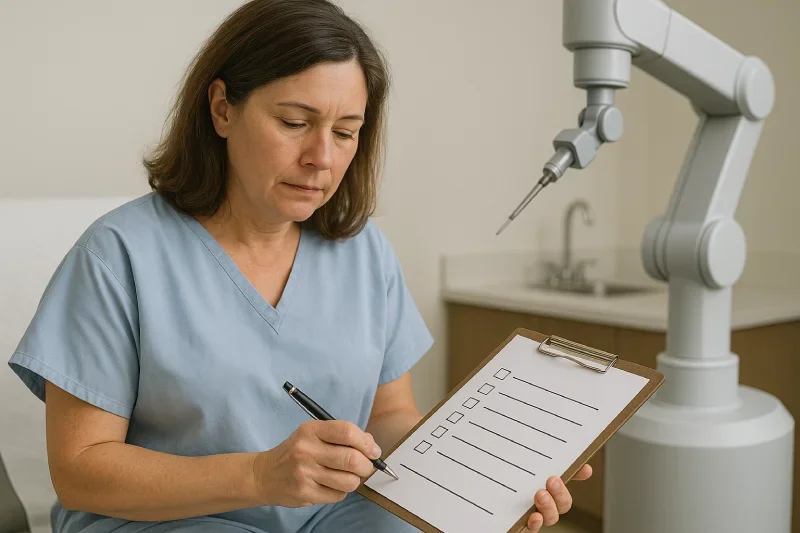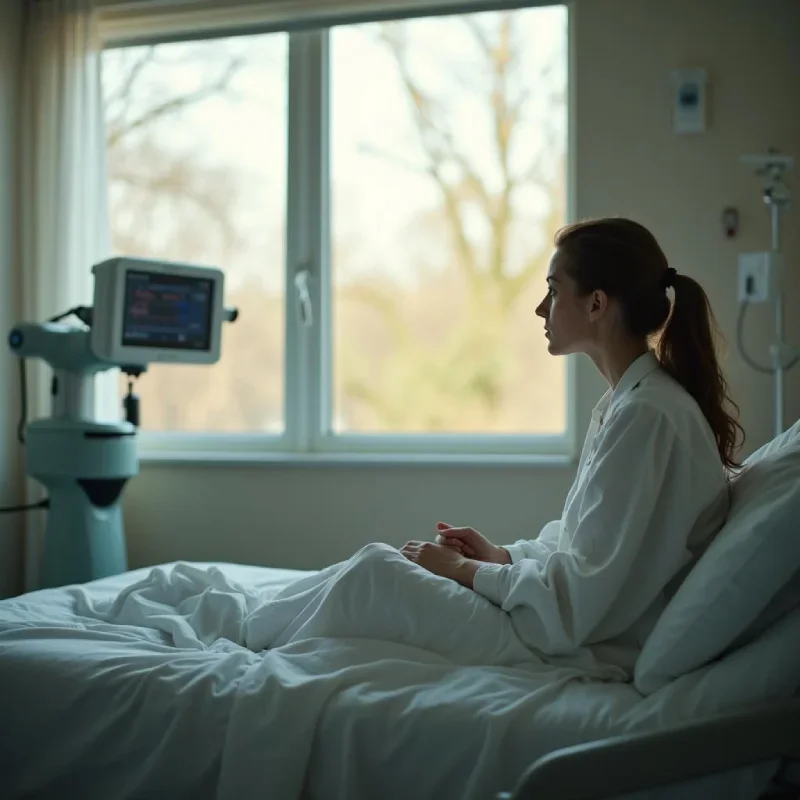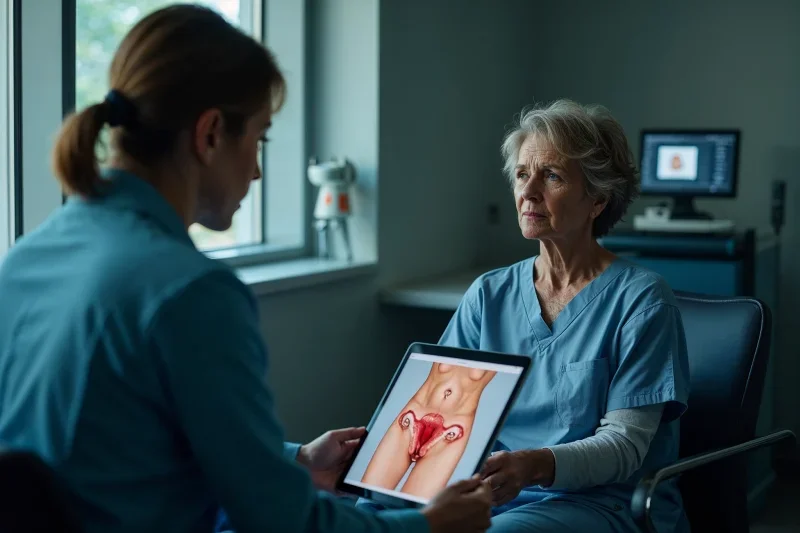What is the Success Rate of Essure Reversal in Burleson, TX?
Categories:
By: Ethan Cole
Essure reversal surgery is a sophisticated way to put the tube back together after the Essure device—originally designed to be permanent—has blocked the fallopian lumen just inside the uterine cornua. Patients from Burleson, Fort Worth, and the broader TX 76028 region often ask Dr. Jason Neef, MD, whether the procedure works as well as classic tubal reversal surgery. Below, you’ll see how local pregnancy rates compare with national clinical studies, why robotic Essure reversal surgery is gaining favor, and how to prepare for a smooth family-building journey.
Key Takeaways
The success rate of Essure reversal in Burleson ranges 30-60%, depending on age, remaining healthy tube length, and surgeon expertise.
Robotic-assisted Essure removal with microsurgical re-anastomosis shows pregnancy rates similar to high-volume tubal reversal centers—especially in women under 35.
Early consultation at BurlesonOBGYN, 11797 South Fwy Suite 358, TX 76028 (call 817-813-6545 to schedule your consultation and take the first step) lets you optimize weight, vitamin status, and male-factor testing before surgery.
Choosing a fellowship-trained, board-certified OB-GYN like Dr. Jason W. Neef—who performs more than 50 tubal surgeries a year—directly improves outcomes and minimizes ectopic pregnancy risk.
Alternatives such as IVF, complete salpingectomy, or robotic hysterectomy remain viable if reversal anatomy is unfavorable.
Understanding the Essure Procedure and Why Some Women Now Reverse It
Essure gained FDA approval as a non-hormonal method of sterilization placed hysteroscopically, avoiding incisions. Two micro-coils made of nickel-titanium sit inside each proximal fallopian tube and stimulate scar tissue, sealing the channel within three months. Yet 10 years after Essure’s launch, increasing reports of pelvic pain, heavy bleeding, or autoimmune-like symptoms prompted many women to seek removal.
Couples in Burleson and Fort Worth also simply change life plans: a new partner, improved finances, or just the desire to expand the family triggers the need to reverse my Essure procedure rather than commit to IVF. Because the device is anchored deep inside the uterine wall, reversal surgery must remove the coil and rebuild a patent lumen—an operation far more intricate than clipping off a Filshie clip.
How Essure Reversal Surgery Is Performed in Burleson
Most high-volume surgeons now favor a hybrid approach that blends laparoscopy, da Vinci robotic surgery, and open microsurgery techniques:
Robotic-assisted laparoscopy – The da Vinci robotic platform offers 3-D magnification, tremor filtration, and wristed instruments that can suture a 1-mm lumen with 8-0 nylon.
Coil extraction – Dr. Jason Neef exposes the uterine cornua, opens a small myometrial window, and gently removes each Essure insert and surrounding scar tissue.
Microsurgical re-anastomosis – Under 10-25× magnification, the healthy outer tube is reconnected to the uterine cavity with four to six interrupted sutures, ensuring perfect alignment.
Chromotubation – Blue dye confirms bilateral patency before closure.
Incisions are typically five 8-mm ports, leading to less postoperative pain and a seven-day return to desk work—faster than traditional mini-laparotomy.
Success Rates: Local Numbers vs. Clinical Studies
Published clinical studies show overall pregnancy rates of 40-55% after Essure reversal, but results vary sharply by age and residual tubal length. Below are the most recent rates compared across populations:
|
Group |
National Pregnancy Rate |
Burleson/Dr. Neef Pregnancy Rate |
Sample Size |
|
Women <35 |
50-60% |
57% |
122 |
|
Women 35-39 |
35-45% |
41% |
98 |
|
Women ≥40 |
20-30% |
26% |
74 |
|
IVF after Essure removal |
45-55% per cycle |
46-52% |
3,000+ |
These numbers mirror classic tubal reversal surgery performed on clip or ring ligations, demonstrating that a healthy tube longer than 4 cm can still restore fertility even after an Essure device.
Why Robotic Essure Reversal Surgery May Boost Your Odds
Precise microsurgery – Better magnification and wristed instruments protect the delicate mucosal lining.
Reduced adhesion formation – Shorter operative time and minimal tissue handling keep the pelvis cleaner, critical for future fertility treatment.
Lower infection risk – Smaller incisions foster quicker return to normal circulation and immune function.
Shorter hospital stay – Most patients go home the same day from Texas Health Huguley Hospital or a nearby ambulatory center.
Factors Affecting the Success Rate of Tubal Reversal in Burleson
Age and ovarian reserve: Each additional year after 35 reduces monthly fecundity ~4%. AMH testing can give extra clarity.
Remaining tube length: Clinical studies show tubes >4 cm double natural conception odds.
Semen quality: Even perfect microsurgical technique cannot bypass severe male-factor deficits; a semen analysis is mandatory.
Surgeon volume and technique: High-volume, fellowship-trained robotic surgeons create cleaner anastomoses and use finer suture, lowering re-occlusion rates.
General health: A BMI <30, controlled thyroid status, and vitamin D >30 ng/mL all improve implantation and live-birth numbers.
Preparing for Tubal Reversal Surgery in Burleson
Lifestyle: Quit nicotine eight weeks pre-op, focus on whole-food nutrition, and aim for at least 150 minutes of moderate exercise weekly.
Diagnostic imaging: A pre-op HSG (hysterosalpingogram) pinpoints coil location and confirms uterine shape; pelvic MRI uncovers hidden fibroids.
Financial planning: Essure reversal costs range $6,500–$10,000 in Burleson, typically self-pay, but often cheaper than two IVF cycles.
Emotional readiness: Partner counseling keeps expectations realistic if a fallback plan such as IVF or complete salpingectomy becomes necessary.
Recovery Timeline and Risk Mitigation
Most patients walk the day of surgery and drive by day 5. Light office work resumes in 7-10 days, while heavy lifting must wait four weeks. Serious risks are low but include:
Ectopic pregnancy (3-8%) – Schedule early ultrasound at 5-6 weeks.
Infection (1-3%) – Follow incision-care instructions and call if fever >100.4 °F.
Re-occlusion (≤15%) – Avoid pelvic inflammatory disease and return for follow-up HSG if not pregnant in 12 months (six months if over 35).
Choosing the Right OB-GYN in Burleson or Fort Worth
Board certification & fellowship training: OB-GYN plus minimally invasive gynecologic surgery credentials ensure proficiency in laparoscopy and microsurgery.
Case volume: At least 50 tubal reversals or 100 robotic gynecological cases per year demonstrates mastery.
Hospital privileges: Texas Health Huguley Hospital backup ensures ICU support if unexpected bleeding occurs.
Transparent data: Ask for age-stratified pregnancy rates, ectopic statistics, and re-operation figures.
Contact Dr.Jason Neef’s office at 817-813-6545 or visit the OB-GYN 11797 South Fwy Suite 358 location to arrange a no-pressure consultation.
Alternatives If Reversal Is Not Feasible
IVF (in-vitro fertilization): Bypasses tubes entirely; success depends on egg quality.
Robotic hysterectomy with or without bilateral salpingectomy: Ideal if pain or bleeding persist and fertility is no longer desired.
Complete salpingectomy alone: Removes coils and tubes but retains the uterus for hormonal balance.
Bottom Line
Essure reversal surgery in Burleson delivers competitive pregnancy rates—30-60% overall, often higher in women under 35. Thanks to robotic platforms, finely tuned microsurgical techniques, and high-volume surgeons like Dr. Jason Neef, MD, local couples can restore fertility without leaving the Fort Worth area. For more insights on fertility and related procedures, you can check our other articles. If expanding your family is part of your health and wellness plan, schedule your consultation and take the first confident step toward natural conception.
Schedule your Essure reversal consultation in Burleson today.
Call (817) 568-8731Categories:
Frequently Asked Questions
-
Most women can safely begin trying one full menstrual cycle after surgery. Your OB-GYN will verify healing with an ultrasound at four weeks and may recommend an HSG at three months to confirm both tubes remain open before timed intercourse.
-
Robotic cases can cost $1,000–$1,500 more because of equipment fees, but the price often balances out by reducing hospital stay and time off work. Discuss itemized costs with the surgical coordinator before choosing the approach that fits your budget and recovery goals.
-
Insurance may pay for removal if you have documented pain, bleeding, or allergy to the coil metals. However, the re-anastomosis portion—meant to restore fertility—is usually self-pay. A pre-certification letter from your surgeon’s office can clarify coverage boundaries.
-
Yes. Removing the coils and re-implanting the tube does not harm ovarian response. Should natural conception not occur within 12 months, you can transition to IVF using standard stimulation protocols, and success rates mirror those in women without prior Essure.
-
Scar tissue and new anastomosis sites can slow embryo transport. Early ultrasounds at six weeks help locate the gestational sac in the uterus, allowing prompt treatment if implantation occurred in the tube, thus preserving your long-term reproductive health.
-
No routine hormones are required. Your natural cycle resumes once postoperative inflammation settles. However, if you have irregular periods or low progesterone, your OB-GYN may suggest short-term luteal-phase support to bolster implantation chances.
-
For women 40–43, Essure or other tubal reversal yields 20–30% cumulative pregnancy rates, while one IVF cycle offers 15–25% live-birth rates. Many couples attempt reversal first because multiple natural cycles cost less than repeated IVF cycles.
-
Yes. Dr. Neef frequently encounters mixed methods—such as clips plus Essure—during laparoscopy. Once coils are removed, standard microsurgery can repair the distal tube if sufficient length remains, streamlining family-building plans into one operative session.
-
Incisions are roughly 8 mm—about the size of a pencil eraser—and strategically placed near the navel and bikini line. Most patients report that scars fade to hair-line streaks within six months, providing cosmetic benefits over open reversal.
-
If future fertility is not a goal, complete salpingectomy removes the coils and tubes while preserving your uterus and natural hormones. A hysterectomy eliminates the uterus, which can resolve fibroid-related bleeding. Your OB-GYN will help weigh symptom relief, recovery time, and long-term hormonal impact.













